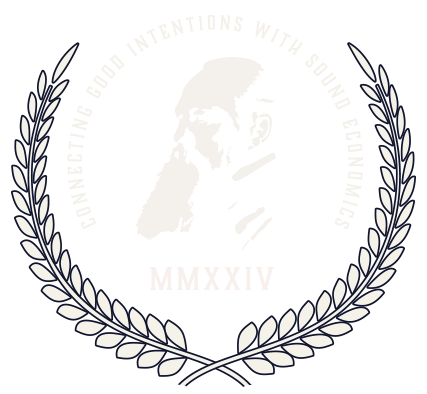These twelve essays that compriseCatholicism and Liberalism were originally read for study sessions at Georgetown University in 1989 and 1990 under the auspices of the Woodstock Theological Center and Georgetown’s Department of Government. The distinguished collaborators in this project convened to explore ways to improve relations between the historically antipathetical forces of liberalism and Catholicism. At the threshold of the 1990s both traditions looked vital and promising.
Emboldened by the West’s triumph over the Soviet Empire, Francis Fukuyama celebrated “Western liberal democracy as the final form of government.” Catholicism’s heightened prestige rested on its central role in the defeat of communism. Its quarter-century of Ostpolitik culminated in Mikhail Gorbachev’s dramatic and symbolic visit to the Vatican in December 1989, and its spiritual leadership of Poland’s Solidarity movement had set the pattern for Eastern Europe’s resistance to Moscow.
In an irritatingly vague and platitudinous introduction, R. Bruce Douglass ignores the Church’s achievement in the East, and wrongly attributes Catholicism’s strengthened position in American life “to the process of change” set off by the Second Vatican Council, and the “coming of age” of American Catholics signaled by the presidency of John F. Kennedy in 1960. It is a good deal more credible to say that the needless, but nonetheless real, divisions among Catholics brought about by Vatican II weakened their political effectiveness. And the coming-of-age explanation is not only trite, but its placement in time disagrees with that of the historian Philip Gleason who later in the book says that “American Catholics entered the 1920s with new confidence, a feeling of having come of age.” Douglass continues, arguing that Catholics of the 1990s are no longer satisfied with liberalism’s claim to be “the de facto public philosophy of America.” Therefore an “encounter” between “liberalism and Catholicism as distinct intellectual traditions“ is almost certain ( Douglass’ emphasis). The collaborators on this volume intend to shape this ”encounter“ into an ”orderly conversation“ on the American public philosophy–”the cluster of ideas associated with what Abraham Lincoln called the American ‘proposition.’ “ Not only will Catholics and liberals ”learn“ from each other in this ”dialogue,“ but it will set an example by which Americans can move beyond ”the sort of antagonism and alienation that makes for ‘culture wars.’ “
Father Murray Misinterpreted
By their celebration of dialogue, and the epigraph at the opening of Catholicism and Liberalism drawn from Father John Courtney Murray’s We Hold These Truths (1960), Douglass and his colleagues clearly envision their efforts as a continuation of Father Murray’s project to establish the American public philosophy by way of “civil conversation.” But as we shall see, their communitarian “alternative” to modern liberalism’s assertion of the self-creating autonomous individual is not at all what Father Murray had in mind as a renewal of American political life. Father Murray believed that strenuous argument was the very essence of democracy; it was the best hope for civic unity and the dissolution of “the structure of war” that lay just below the “forced urbanity” of American society. To repair a fractious polity by argument seems no advance at all to those who understand argument as verbal combat, whereby opponents bludgeon each other with opinions and never cede any ground.
But Father Murray’s idea of argument harkened back to the nineteenth-century view of American democracy as education through argument; perhaps its most tireless spokesman was the famous convert to Catholicism, Orestes Brownson. Father Murray championed argument against the prevailing view that modern public life was so complex that it had to be administered by professionals and experts whose decisions would proceed from scientifically verifiable information. All nonscientific talk was mere opinion, and suitable only to the private sphere. The result was what Father David Tracy in his essay calls, “the technicization of a once public realm.” Public debate became a necessary evil where it wasn’t completely proscribed; democracy came to rest on information not argument.
But information is not knowledge. It is only when we submit our opinions, prejudices, and programs to the purifying fire of public discourse that we find out what we know and what remains for us to learn. By defending our views with evidence and reasoned explanation, we elevate them out of the category of mere opinion and provide them with a form and a coherence that allows others to appreciate them as verbal depictions of their own experience. Argument thus enables us to understand our own minds by forcing us to explain ourselves clearly to others. The efficacy of argument rests on our willingness to feel the weight of our opponents’ position, and to imaginatively enter into their arguments.
It was this notion of argument that animated Father Murray’s efforts to renew the American public philosophy and refound it in the “truth” of the “natural law.“ Father Murray was not alone in his efforts to rehabilitate the natural law and make it the basis of an American consensus; most notable among his allies was Walter Lippmann (in The Public Philosophy, 1955). Both men faced the arguably difficult task of having to convincing apply the natural law tradition of Aristotle, Cicero, and St. Thomas Aquinas to “the practical affairs of the modern state.” Compounding their difficulty was that liberal theorists and politicians deliberatively evaded any discussion of the common good; for as Douglass and Father Hollenbach write, many liberals assumed the posture of neutrals, impartial brokers, who merely wanted to distribute the welfare state’s growing entitlements among the innumerable competing claimant groups that comprised the American polity.
John Rawls’ Theory of Justice (1971) transformed liberals’ refusal to talk about the common good into a nonnegotiable first principle of modern liberalism, calling it “the method of avoidance.” This “method” required that “we try so far as we can, neither to assert nor deny any religious, philosophical or moral views, or their associated philosophical accounts of truth and the status of values.” By the late 1980s liberals like Richard Rorty sneeringly dismissed talk of “objective moral values” as “quaint.” For today’s “ultra” liberals, the choice of goods that one ought to pursue in his self-creation is a completely private matter. The liberal state’s only obligation is to make sure that race, gender, religion, age, class, sexual preference, and so on are not obstacles to choice. “Ultra” liberals’ insistence on the supremacy of choice over the ends to be chosen–“the ideology of ‘choice’” as Douglass calls it, “is hardly designed to get people to entertain aspirations beyond life as we now know it.” Liberals’ inability to provide “visionary thinking,” makes them decidedly “unprogressive“ ( Douglass’ emphasis).
Douglass exposes liberals’ pretensions to be a “neutral among ‘sectarian’ creeds,” arguing that their particular construction of human relations, and their “preference for one particular way of acting” on the various freedoms they so cherish are nonnegotiable. With unexampled single-mindedness and “thoroughness” they carry “the case for self-creation through to its logical conclusion“ (Douglass’ emphasis). For as Louis Dupré shows in his essay, the idea of the unencumbered, freely-created self has been latent in liberalism since Thomas Hobbes applied William of Ockham’s ideas about the human will to the social order. Men in Hobbes’ pre-political state of nature are completely antisocial, and ”indeterminate,“ ”directed neither to good nor to evil, nor to any common good.“ Father Joseph Komonchak agrees with Father Murray and the Fathers of Vatican II that Catholicism must always reject and repudiate this Hobbesian-Rawlsian line of ”doctrinaire“ liberalism, even as it now accepts ”liberal political structures“–constitutional governments, religious and civic freedoms, and the like (Father Komonchak’s emphasis).
The Communitarian Alternative
Worried that “hegemonic” liberalism’s “atomistic tendencies” will attenuate the “inherited beliefs and practices,” that compete with it, the writers in Catholicism and Liberalism collaborate in fashioning a Catholic version of the politically fashionable communitarian “alternative” to liberalism. The intellectual foundations of secular communitarianism lie in the conservative sociological tradition which took shape in the nineteenth century as a reaction to the Enlightenment. Modern writers working in this tradition–Robert Bellah, Alan Wolfe, whose writings have influenced Catholicism and Liberalism–locate the basis of community life in emotional and affective bonds, and shared understandings and duties that are so deeply held that they remain unarticulated–“habits of the heart.”
Rorty has characterized such misty notions of community as “terminal wistfulness.” And Douglass’ suspicions that liberals will see “the deliberate pursuit of community” as “something to be liberated from“ are immediately vindicated by Mary C. Segers’ essay which rejects communitarianism as an undue restriction on women, who must ”realize some degree of autonomy and assert some independence from social definition“ (emphasis in the original). These obstacles notwithstanding, Douglass recalls how the ideas of earlier communitarians influenced the ”social liberalism“ of John Dewey; he thereby recommends its ”contemporary equivalent“ as an ”alternative“ to liberalism.
Although communitarianism commends itself as a third way between the free market and the welfare state, its relentless attack on the former makes it difficult to dissociate it from welfare state socialism. The Catholic version of it is hardly any different. Father Hollenbach proposes “a communitarian reconstruction” of “the classical liberal understanding of human rights” by refounding it on “the traditional natural-law conviction that the human person is an essentially social being.” His great hope is to transform the prevailing liberal understanding of rights as “fenceposts” that protect one’s “turf” from intruders, into “claims” that “specify the minimum standards for what it means to treat people as members of the community.” Father Hollenbach points to the United States Bishops’ Pastoral Letter on the American economy, Economic Justice for All (1986), as an example of the communitarianism he has in mind.
But the bishops’ opening instructions on “the responsibilities of social living,” do not prevent their later assertion that “employment is a basic right”– insofar as it is one’s just claim to participate in the community–from resonating like a claim on an entitlement. This familiar ring of claimant-group politics is amplified by the bishops’ macroeconomic policy recommendations which, if followed, would only strengthen the welfare state’s position as the distributor of entitlements. Thus the bishops’ rights language turns out to be indistinguishable from the “rights talk” that dominates American politics and jurisprudence, just as their moral language–“preferential option for the poor,” “compassion,” “community”–is indistinguishable from the patois of the reigning “therapeutocracy.” Catholic communitarianism’s grounding in the natural law obviously does not secure it from sliding into secular communitarianism’s attachment to social democracy and the welfare state. Thus, contrary to what Jean Bethke Elshtain writes, the bishops’ letter marks no advance in the “deadlocked ‘liberal-communitarian debate.’ ”
After a powerfully insightful review of the communitarian tradition in The True and Only Heaven (1991), Christopher Lasch concluded that communitarianism trivializes political life insofar as it is “associated much more closely with intimacy and ‘togetherness’ than with a search for a ‘vigorous and effective political life’” based on the “respect” citizens earn when they attain to “impersonal standards” of moral action. Politics “thrives on controversy.” Father Murray said the same thing, and went on to distinguish the virtues proper to civil life from those proper to other spheres of human existence–family and church.
The air of civil society is rather “cool and dry, with the coolness and dryness that characterize good argument among informed and responsible men.” The polis is animated by “civic amity,” a “friendship” based on “reason and intelligence, laboriously cultivated by the discipline of passion, prejudice, and narrow self-interest.” Catholicism and Liberalism deliberately blurs these distinctions, especially in its afterword where Father Hollenbach displaces “civic friendship” with an ambiguous notion of “solidarity” that Father Murray says is more proper to the Church. To be sure John Paul II uses the language of “solidarity” and “love”; but he does so more to clarify the Church’s social teaching for the purposes of evangelization than to lay down practical principles of political life.
The “Distinguendum est” of St. Thomas Aquinas, which Father Komonchak celebrates earlier in the book, is a habit of mind well suited to argument, but apparently too much to ask from the overly irenic communitarians, Catholic or other.











